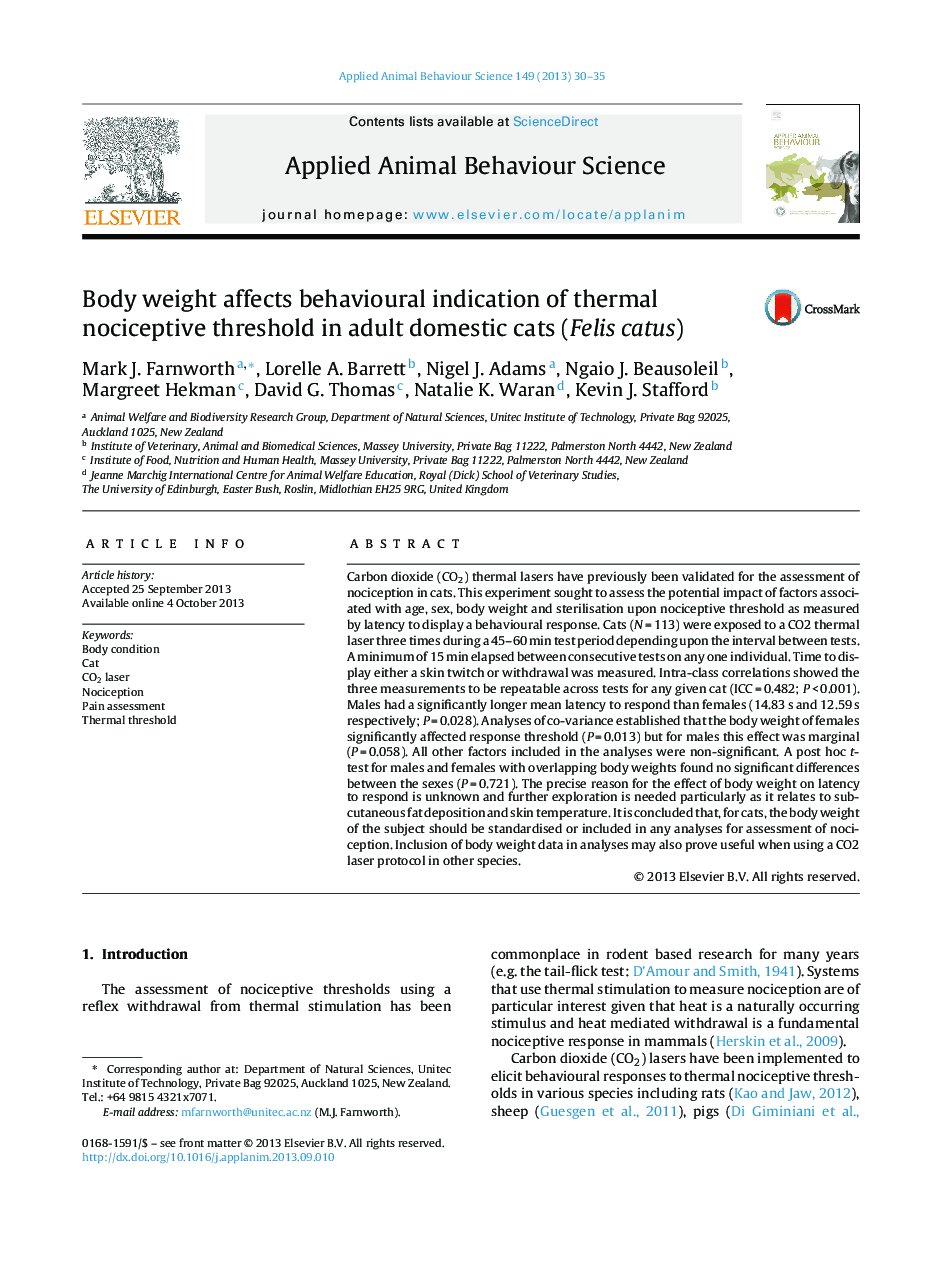| Article ID | Journal | Published Year | Pages | File Type |
|---|---|---|---|---|
| 4522663 | Applied Animal Behaviour Science | 2013 | 6 Pages |
Carbon dioxide (CO2) thermal lasers have previously been validated for the assessment of nociception in cats. This experiment sought to assess the potential impact of factors associated with age, sex, body weight and sterilisation upon nociceptive threshold as measured by latency to display a behavioural response. Cats (N = 113) were exposed to a CO2 thermal laser three times during a 45–60 min test period depending upon the interval between tests. A minimum of 15 min elapsed between consecutive tests on any one individual. Time to display either a skin twitch or withdrawal was measured. Intra-class correlations showed the three measurements to be repeatable across tests for any given cat (ICC = 0.482; P < 0.001). Males had a significantly longer mean latency to respond than females (14.83 s and 12.59 s respectively; P = 0.028). Analyses of co-variance established that the body weight of females significantly affected response threshold (P = 0.013) but for males this effect was marginal (P = 0.058). All other factors included in the analyses were non-significant. A post hoc t-test for males and females with overlapping body weights found no significant differences between the sexes (P = 0.721). The precise reason for the effect of body weight on latency to respond is unknown and further exploration is needed particularly as it relates to sub-cutaneous fat deposition and skin temperature. It is concluded that, for cats, the body weight of the subject should be standardised or included in any analyses for assessment of nociception. Inclusion of body weight data in analyses may also prove useful when using a CO2 laser protocol in other species.
